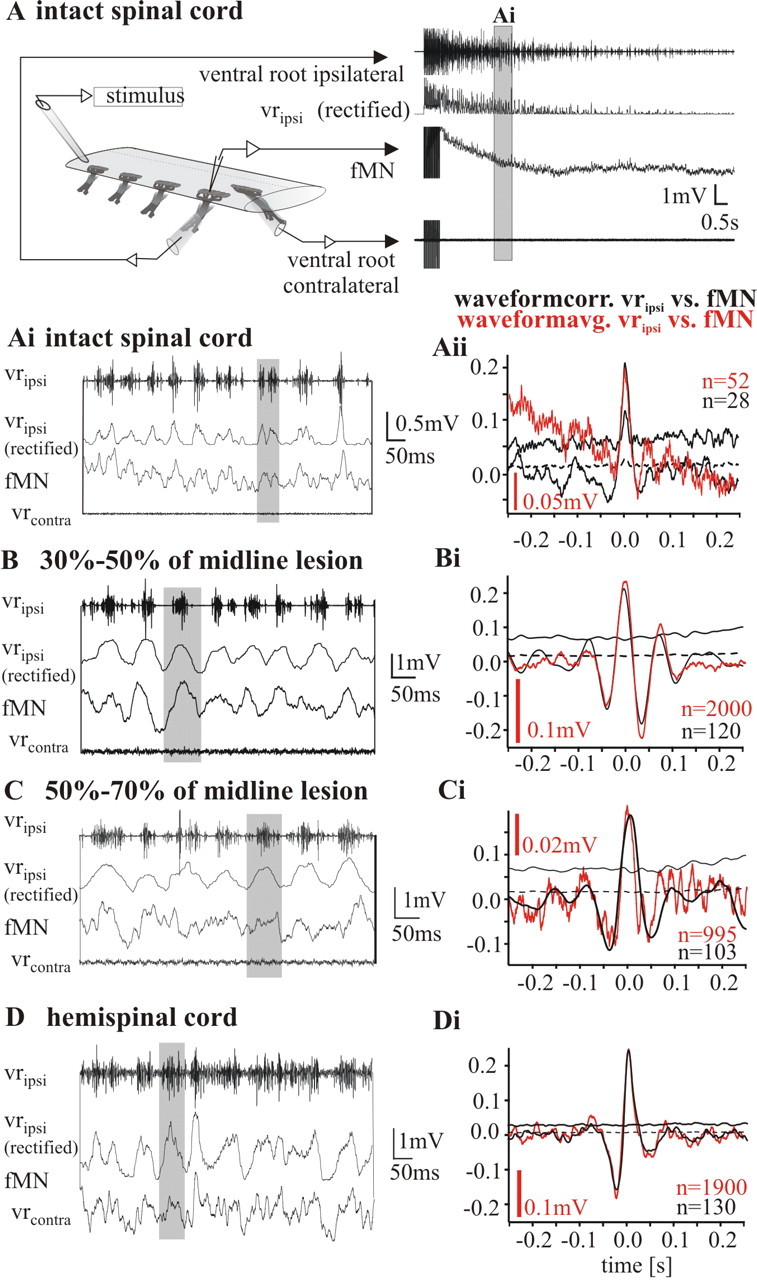Figure 3.

Intracellular recordings of fin motoneurons in an intact cord, a spinal cord with intermediate lesions (50–70% and 30–50% of midline perforated), and a fully hemisected cord, during locomotor burst activity evoked by unilateral electrical stimulation. A, Bout of self-sustained activity in an intact cord evoked by electrical stimulation. Ai, B, C, D, Top trace, Recording from ipsilateral ventral root (vripsi); second trace from top, trace giving the rectified and integrated ipsilateral ventral root activity (vripsi, rectified); third trace from top, intracellular recording from fMN; bottom trace, recording from contralateral ventral root (vrcontra). In the intact cord (Ai), as well as in spinal cords with intermediate lesions (30–50% in B and 50–70% in C) and the hemicord (D), fin motoneurons receive an in-phase drive when activity bouts are triggered by electrical stimulation. Aii, Bi, Ci, Di, Waveform correlations (black traces) of the membrane potential of fin motoneurons and the rectified ventral root recording in all experimental situations are positively correlated at around zero indicating a drive in-phase with the ventral root discharge. In all correlations dashed lines mark the SE and solid lines mark the fourfold SE. Red traces show the mean waveform averages based on the mid-burst of the ipsilateral ventral root burst. In all cases, the time course of the average is close to identical with the course of the correlations indicating clearly an in phase drive to fin motoneurons during the ipsilateral bursting activity.
